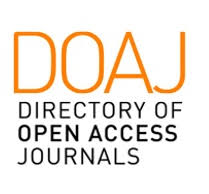O USO DO APLICATIVO DE SAÚDE PÚBLICA MÓVEL MEU DIGISUS
Resumo
O uso de tecnologias móveis impulsionaram os instituições a transformarem os mecanismo de prestação de serviços para utilizar as potencialidades dos smartphones. Este formato de serviços impõe o desafio da aceitação e uso pelos usuários finais. O objetivo deste artigo é identificar a aceitação do aplicativo público de saúde Meu digiSUS através do Modelo de Aceitação de Tecnologia (TAM) extendido. Para alcançar o objetivo, adotou uma abordagem quantitativa e algumas hipóteses foram estabelecida. As variáveis Uso real, Utilidade percebida, Facilidade de uso percebida, Influência social e Risco percebido foram selecionadas para o modelo. Os resultados mostram que a facilidade percebida e a influência social têm um impacto direto e positivo no uso do Meu digiSUS; o risco percebido tem um impacto negativo no uso do aplicativo. Os desenvolvedores devem se atentar aos inibidores de uso do aplicativo como o risco percebido e a utilidade percebido de uso a fim de manter os usuários existentes e atrair novos usuários.
Palavras-Chave: Aceitação de tecnologia; Modelo de Aceitação de Tecnologia; Saúde pública móvel; Meu digiSUS.
Texto completo:
PDFReferências
ALI, Eskinder E. et al. Patients perception of app-based educational and behavioural interventions for enhancing oral anticancer medication adherence. Journal of Cancer Education, v. 33, n. 4, 2017.
ALI, Rahib; ZHANG, Ziqiong; BUX SOOMRO, Muhammad. Smoking-cessation acceptance via mobile health. Human Systems Management, v. 38, n. 3, p. 313-327, 2019
ALKHALDI, Ghadah et al. The effectiveness of prompts to promote engagement with digital interventions: a systematic review. Journal of Medical Internet Research, v. 18, n. 1, e6, 2016.
ANDERSON, Kevin; BURFORD, Oksana; EMMERTON, Lynne. Mobile health apps to facilitate self-care: a qualitative study of user experiences. PLoS ONE, v. 11, n. 5, e0156164, 2016.
ANTICONA HUAYNATE, Cynthia Fiorella et al. Diagnostics barriers and innovations in rural areas: insights from junior medical doctors on the frontlines of rural care in Peru. BMC Health Services Research, v. 15, n. 454, p. 1-10, 2015.
AJZEN, Icek. The theory of planned behavior. Organizational behavior and human decision processes, v. 50, n. 2, p. 179-211, 1991.
BAUER, Raymond A. Consumer Behavior as Risk Taking. In: Marketing classics: a selection of influential articles. Boston: Allyn, Bacon, 1969. p. 119-127.
BECKER, Dennis. Acceptance of mobile mental health treatment applications. In: THE 6TH INTERNATIONAL CONFERENCE ON CURRENT AND FUTURE TRENDS OF INFORMATION AND COMMUNICATION TECHNOLOGIES IN HEALTHCARE (ICTH 2016), n. 98, p. 220-227, 2016.
BÊRNI, Duilio de Avila; FERNANDEZ, Brena Paula Magno. Métodos e Técnicas de Pesquisa: Modelando as ciências empresariais. São Paulo: Saraiva, 2012.
CAR, Josip et al. eHealth in the future of medications management: personalisation, monitoring and adherence. BMC Medicine, v. 15, n. 1, p. 73, 2017.
CARLOS, Daniele de A. O. et al. Concepção e avaliação de tecnologia mhealth para promoção da saúde vocal. Revista lbérica de Sistemas e Tecnologias de Informação, n. 9, p. 46-60, 2016.
CHO, Jaehee et al. Determinants of Adoption of Smartphone Health Apps Among College Students. American Journal of Health Behaviour, v. 38, n. 6, p. 860-870, 2014.
DAVIS, Fred D. Perceived usefulness, perceived ease of use, and user acceptance of information technology. MIS Quarterly, v. 13, n. 3, p. 319-339, 1989.
DAVIS, Fred D.; BAGOZZI, Richard P.; WARSHAW, Paul R. User Acceptance of Computer Technology: a comparison of two theoretical models. Management Science, v. 35, n. 8, p. 982-1003, 1989.
DEEKS, Amanda et aliae. The effects of gender and age on health related behaviors. BMC Public Health, v. 9, n. 1, p. 1-8, 2009.
DEMIRIS, George. New era for the consumer health informatics. Health Systems, v. 1, n. 1, p. 13-16, 2012.
DOOCY, Shannon et al. Guidelines and mHealth to Improve Quality of Hypertension and Type 2 Diabetes Care for Vulnerable Populations in Lebanon: Longitudinal Cohort Study. JMIR Mhealth Uhealth, v. 5, n. 10, e158, 2017.
DOU, Kaili et al. Patients’ Acceptance of Smartphone Health Technology for Chronic Disease Management: A Theoretical Model and Empirical Test. JMIR mHealth and uHealth, v. 5, n. 12, 2017.
DWIVEDI, Yogesh K. et al. A generalised adoption model for services: A cross-country comparison of mobile health (m-health). Government Information Quarterly, v. 33, n. 1, p. 174-187, 2016.
FEATHERMAN, Mauricio S.; PAVLOU, Paul A. Predicting e-services adoption: a perceived risk facet perspective. International Journal of Human-Computer Studies, n. 59, p. 451-474, 2003.
FISHBEIN, Joel N. et al. Mobile application to promote adherence to oral chemotherapy and symptom management: a protocol for design and development. JMIR Research protocols, v. 6, e62, 2017.
FISHBEIN, Martin; AJZEN, Icek. Belief, attitude, intention and behavior: an introduction to theory and research. Addison-Wesley, Reading, 1975.
FORNELL, Claes; LARCKER, David F. Evaluation of structural equation models with unobservable variables and measurement error: Algebra and statistics. Journal of Marketing Research, v. 18, n. 3, p. 382-388, 1981.
GAGNON, Marie-Pierre et aliae. m-Health adoption by healthcare professionals: a systematic review. Journal of the American Medical Informatics Association, v. 23, n. 1, p. 212-220, 2016.
HAIR, Joseph F. et al. A primer on Partial Least Squares Structural Equation Modelling (PLS-SEM). SAGE, 2014.
______ Análise multivariada de dados. 6. ed. Tradução Adonai Schulp Sant`Anna. Porto Alegre: Bookman, 2009.
HOSSAIN, Nazmul et al. Factors influencing rural end-users’ acceptance of eHealth in developing countries: A study on Portable Health Clinic in Bangladesh. Telemedicine and e-Health, v. 25, n. 3, p. 221-229, 2018.
JIMERSON, Brittney H. Improving ergonomic intervention implementation and adoption among caregivers in a healthcare system. 121 f. Dissertation (Doctoral in Industrial and Systems Engineering), North Carolina Agricultural and Technical State University, United States, North Carolina, Greensboro, 2016.
KEEN, Stefanie M.; ROBERTS, Nicholas. Preliminary evidence for the use and efficacy of mobile health applications in managing posttraumatic stress disorder symptoms. Journal Health Systems, v.6, n. 2, p. 122-129, 2017.
KLINGBERGM, Anders et al. mHealth for Burn Injury Consultations in a Low-Resource Setting: An Acceptability Study Among Health Care Providers. Telemedicine and e-Health, v. 0, n. 0, 2019.
KUMAR, Santosh et al. Mobile health technology evaluation: the mHealth evidence workshop. American Journal Preventive Medicine, v. 45, n. 2, p. 228-36, 2013.
KUMMER, Tyge-F.; RECKER, Jan; BICK, Markus. Technology-induced anxiety: Manifestations, cultural influences, and its effect on the adoption of sensor-based technology in German and Australian hospitals. Information & Management, v. 54, p. 73-89, 2017.
LEE, Euehun; HAN, Semi. Determinants of adoption of mobile health services. Online Information Review, v. 39, n. 4, p. 556-573, 2015.
LEUNG, Louis; CHEN, Cheng. E-health/m-health adoption and lifestyle improvements: Exploring the roles of technology readiness, the expectation-confirmation model, and health-related information activities. Telecommunications Policy, v. 43, n. 6, p. 563-575, 2019.
LIMA, Cíntia C. B. Aplicativos móveis de interesse público: limites e possibilidades para a cidadania no Brasil. 2017. 239f. Dissertação (Mestrado em Comunicação) – Programa de Pós-Graduação em Comunicação, Faculdade de Comunicação, Universidade de Brasília, 2017.
LOPES, Juliana E.; HEIMANN, Candice. Uso das tecnologias da informação e comunicação nas ações médicas a distância: um caminho promissor a ser investido na saúde pública. Journal of Health Informatics, v. 8, n. 1, 2016.
MACDONALD, Emma M.; PERRIN, Byron M.; KINGSLEY, Michael I. C. Enablers and barriers to using two-way information technology in the management of adults with diabetes: a descriptive systematic review. Journal of Telemedicine and Telecare, v. 1, n. 1, 2017.
MARRIE, Ruth A. et al. Use of eHealth and mHealth technology by persons with multiple sclerosis. Multiple Sclerosis and Related Disorders, n. 27, p. 13-19, 2019.
MATTHEW-MAICH, Nancy et al. Designing, implementing, and evaluating mobile health technologies for managing chronic conditions in older adults: a scoping review. JMIR mHealth and uHealth, v. 4, n. 2, 2016.
MOORE, Gary C.; BENBASAT, Izak. Development of an instrument to measure the perceptions of adopting an information technology innovation. Information Systems Research, v. 2, p. 192-222, 1991.
NG, Denise et al. What Is Being Used and Who Is Using It: Barriers to the Adoption of Smartphone Patient Experience Surveys. JMIR Formative Research, v. 3, n. 1, e9922, 2019.
PHAM, Quynh; CAFAZZO, Joseph A.; FEIFER, Andrew. Adoption, Acceptability, and Effectiveness of a Mobile Health App for Personalized Prostate Cancer Survivorship Care: Protocol for a Realist Case Study of the Ned App. JMIR Research Protocols, v. 6, n. 10, p. 1-38, 2017.
PENG, Wei et al. A qualitative study of user perceptions of mobile health apps. BMC Public Health, v. 16, p. 11-58, 2016.
RAYKOV, Tenko; MARCOULIDES, George A. A method for comparing completely standardized solutions in multiple groups. Structural equation modeling, v. 7, n. 2, p. 292-308, 2000.
ROCHA, Thiago A. H. et alia. Saúde Móvel: novas perspectivas para a oferta de serviços em saúde. Epidemiololgia e Serviços de Saúde, v. 25, n. 1, p. 159-170, 2016.
SARNO, Flavio et al. Mobile health e excesso de peso: uma revisão sistemática. Revista Panam Salud Publica, v. 35, n. 5/6, p. 424-431, 2014.
SCHNALL, Rebecca et al. Trust, perceived risk, perceived ease of use and perceived usefulness as factors related to mHealth technology use. Studies in health technology and informatics, n. 216, p. 467-471, 2015.
SUN, Yongqiang et al. Understanding the acceptance of mobile health services: a comparison and integration of alternative models. Journal of Electronic Commerce Research, v. 14, n. 2, p. 183-199, 2013.
STREET, Tamara D.; LACEY, Sarah J. Employee Perceptions of Workplace Health Promotion Programs: Comparison of a Tailored, Semi-Tailored, and Standardized Approach. International journal of environmental research and public health, v. 15, n. 5, p. 332-342, 2018.
TAYLOR, Shirley; TODD, Peter. Decomposition and crossover effects in the theory of planned behaviour: A study of consumer adoption intentions. International Journal of Research in Marketing, v. 12, n. 2, p. 137-155, 1995.
VENKATESH, Viswanath et al. User acceptance of information technology: toward a unified view. MIS Quarterly, v. 27, n. 3, p. 425-478, 2003.
VENKATESH, Viswanath; DAVIS, Fred D. Theoretical extension of the technology acceptance model: four longitudinal field studies. Management Science, v. 46, n. 2, p. 186-204, 2000.
VENKATESH, Viswanath; THONG, James Y. L.; XU, Xin. Unified theory of acceptance and use of technology: a synthesis and the road ahead. Journal of the Association for Information Systems, v. 17, n. 5, p. 328-376, 2016.
WILLIAMS, Michael D. et al. The unified theory of acceptance and use of technology (UTAUT): a literature review. Journal of Enterprise Information Management, v. 28, n. 3, p. 443-488, 2015.
XUE, Lishan et al. An exploratory study of ageing women's perception on access to health informatics via a mobile phone-based intervention. International Journal of Medical Informatics, v. 81, n. 9, p. 637-648, 2012.
DOI: https://doi.org/10.22408/reva402019379390-406
Métricas do artigo
Metrics powered by PLOS ALM
Apontamentos
- Não há apontamentos.












